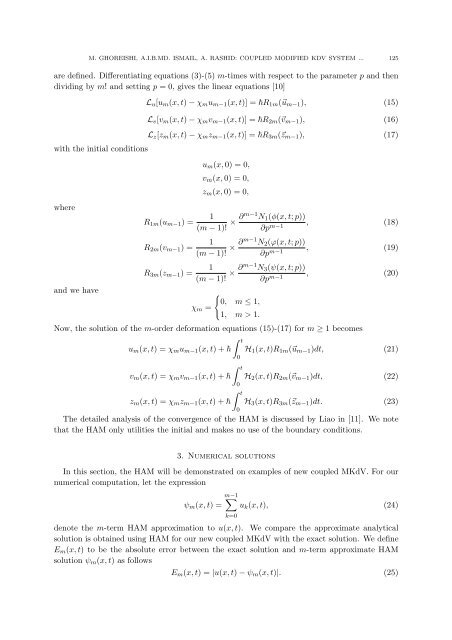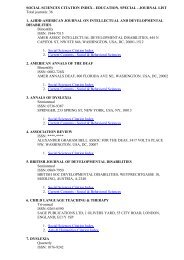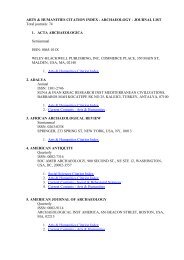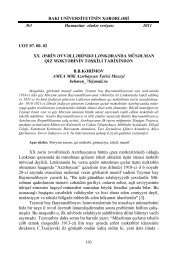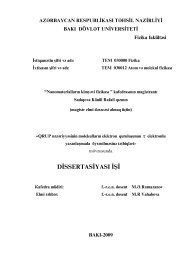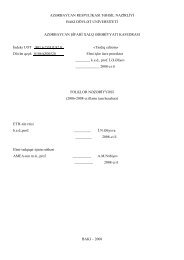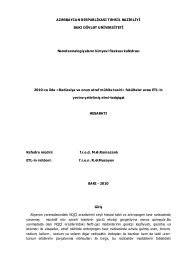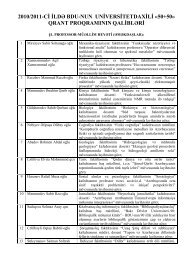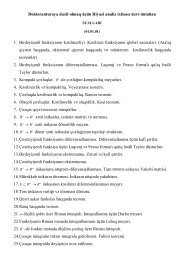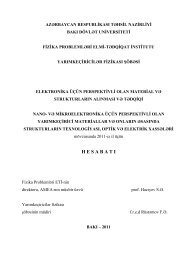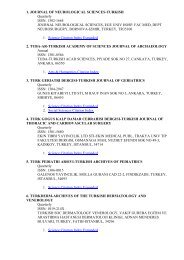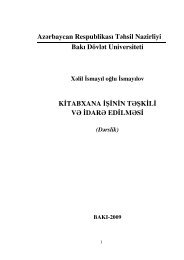THE SOLUTION OF COUPLED MODIFIED KDV SYSTEM BY THE ...
THE SOLUTION OF COUPLED MODIFIED KDV SYSTEM BY THE ...
THE SOLUTION OF COUPLED MODIFIED KDV SYSTEM BY THE ...
Create successful ePaper yourself
Turn your PDF publications into a flip-book with our unique Google optimized e-Paper software.
M. GHOREISHI, A.I.B.MD. ISMAIL, A. RASHID: <strong>COUPLED</strong> <strong>MODIFIED</strong> <strong>KDV</strong> <strong>SYSTEM</strong> ... 125<br />
are defined. Differentiating equations (3)-(5) m-times with respect to the parameter p and then<br />
dividing by m! and setting p = 0, gives the linear equations [10]<br />
with the initial conditions<br />
where<br />
and we have<br />
L u [u m (x, t) − χ m u m−1 (x, t)] = R 1m (⃗u m−1 ), (15)<br />
L v [v m (x, t) − χ m v m−1 (x, t)] = R 2m (⃗v m−1 ), (16)<br />
L z [z m (x, t) − χ m z m−1 (x, t)] = R 3m (⃗z m−1 ), (17)<br />
R 1m (u m−1 ) =<br />
R 2m (v m−1 ) =<br />
R 3m (z m−1 ) =<br />
u m (x, 0) = 0,<br />
v m (x, 0) = 0,<br />
z m (x, 0) = 0,<br />
1<br />
(m − 1)! × ∂m−1 N 1 (φ(x, t; p))<br />
∂p m−1 , (18)<br />
1<br />
(m − 1)! × ∂m−1 N 2 (ϕ(x, t; p))<br />
∂p m−1 , (19)<br />
1<br />
(m − 1)! × ∂m−1 N 3 (ψ(x, t; p))<br />
∂p m−1 , (20)<br />
χ m =<br />
{<br />
0, m ≤ 1,<br />
1, m > 1.<br />
Now, the solution of the m-order deformation equations (15)-(17) for m ≥ 1 becomes<br />
u m (x, t) = χ m u m−1 (x, t) + <br />
v m (x, t) = χ m v m−1 (x, t) + <br />
z m (x, t) = χ m z m−1 (x, t) + <br />
∫ t<br />
0<br />
∫ t<br />
0<br />
∫ t<br />
0<br />
H 1 (x, t)R 1m (⃗u m−1 )dt, (21)<br />
H 2 (x, t)R 2m (⃗v m−1 )dt, (22)<br />
H 3 (x, t)R 3m (⃗z m−1 )dt. (23)<br />
The detailed analysis of the convergence of the HAM is discussed by Liao in [11]. We note<br />
that the HAM only utilities the initial and makes no use of the boundary conditions.<br />
3. Numerical solutions<br />
In this section, the HAM will be demonstrated on examples of new coupled MKdV. For our<br />
numerical computation, let the expression<br />
ψ m (x, t) =<br />
m−1<br />
∑<br />
k=0<br />
u k (x, t), (24)<br />
denote the m-term HAM approximation to u(x, t). We compare the approximate analytical<br />
solution is obtained using HAM for our new coupled MKdV with the exact solution. We define<br />
E m (x, t) to be the absolute error between the exact solution and m-term approximate HAM<br />
solution ψ m (x, t) as follows<br />
E m (x, t) = |u(x, t) − ψ m (x, t)|. (25)


